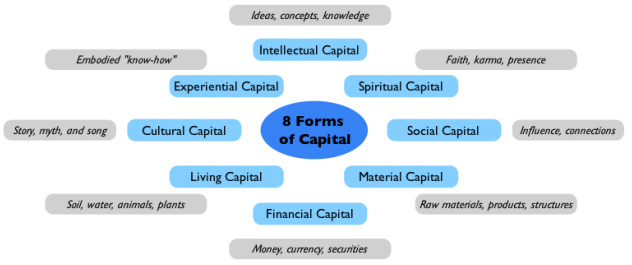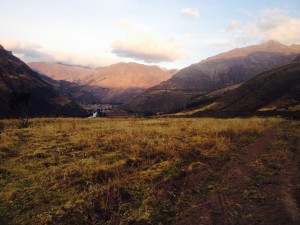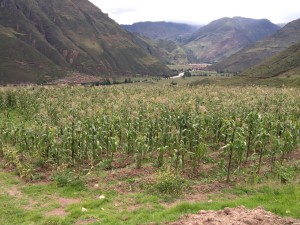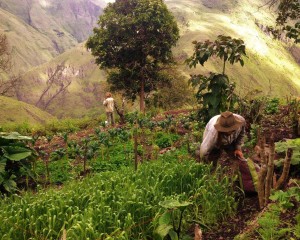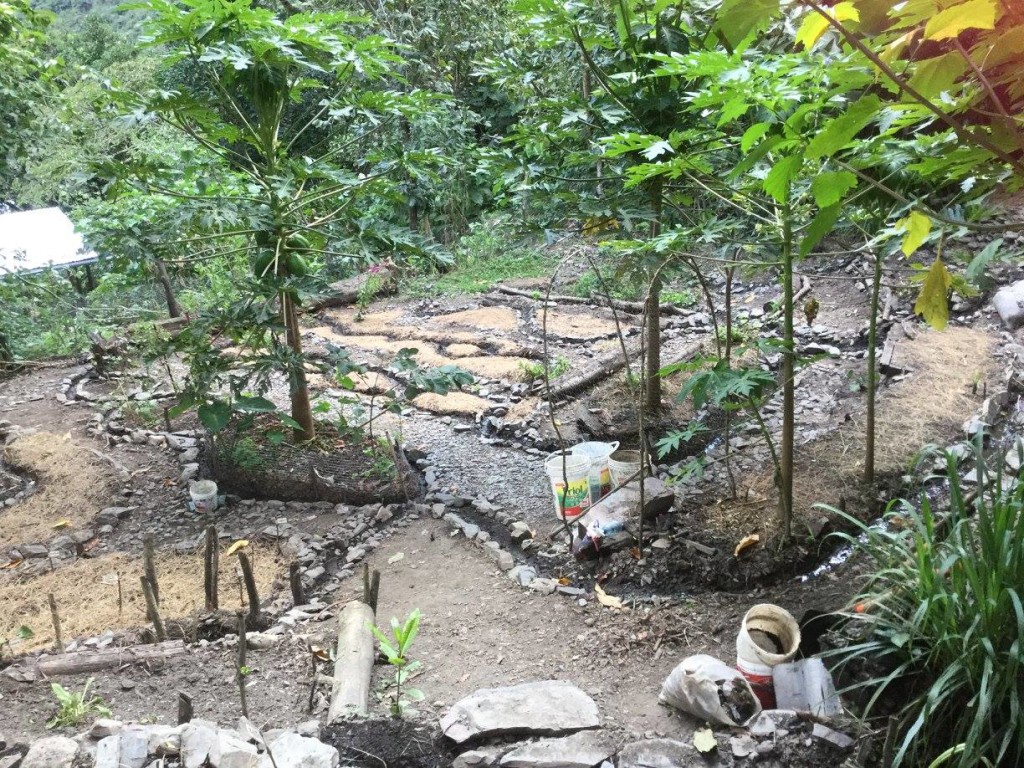Planet Falling Apart? Here’s an Ancestral Regenerative Solution
posted by Roman Hanis on July 22nd, 2016
I often meet people who are disenchanted, frustrated, and at times outright infuriated with the situation in the world today that involves the destruction of natural resources, pollution, famine, sicknesses, diseases, wars and many other misfortunes that plague our current society. The toxic emotions that come up are often a result of not seeing any hope for a resolution and the seemingly dead end scenario our civilization has reached. These emotions most of the time just end up contributing to the overall toxicity of all the other issues and don’t allow for the lucid awareness that can objectively see the steps to be implemented, first and foremost by each of us being the ocean in the drop to culminate in a critical mass paradigm shift. Here we share a few drops that have come together through the work of the Paititi Institute’s intention to be a proactive part of the solution to the current conundrum in the world.
When was the last time you bought a product with a label stating it was “sustainable”? Over the past 20 or more years, it’s become a fashionable way to boost sales. The problem is, it’s not really helping people or the environment because it’s far too late to sustain the planet in such a degraded condition. 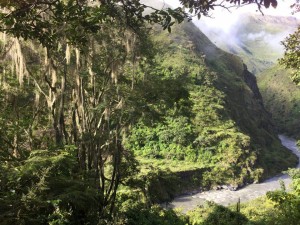
According to the Global Footprint Network, humanity currently uses the equivalent of 1.6 planets to provide resources and absorb our waste. Put another way, “this means it now takes the Earth one year and six months to regenerate what we use in a year.” Simply sustaining this current state of affairs, after so much damage to the environment, natural resources and cultural heritage, won’t get us very far. That’s why it’s time for regeneration.
And it’s not just our ecological systems that need healing. Social, ancestral, and community healing needs to happen too. It’s encouraging that things have started moving in this direction but there’s still a heavy focus on sustainability over regeneration.
The Old vs. New paradigms
One example of old-paradigm thinking implemented around the globe is the focus on “preservation”. This often entails putting a fence around a protected natural landscape and calling it a nature reserve. Of course, this is positive on one level, preserving the pristine landscapes we still have, but the reality is we have to live in a harmonious relationship with the earth. Simply making reserves doesn’t address this reality because human communities are part of the ecosystem. The new paradigm is about empowering local communities to understand the long term value of a healthy ecosystem for the sake of their children and their children’s children. From this motivation it’s possible that humans can improve and enhance resources with use through a conscious, organized and whole-systems approach.
Furthermore, the old way of doing things is linear and typically based on two-dimensional approaches cooked up in offices far away from where the initiative takes place. Money, man-hours and systems are agreed and allocated, even though they fail to consider the interconnected nature and unique situation of the grass root application at the source. They’re overly focused on money and formulaic approaches at the expense of all other factors.
Ethan Roland & and our friend Gregory Landua who co-wrote the incredible thesis, Regenerative Enterprise, state that there’s more than just financial capital. There’s also social, material, living, intellectual, experiential, cultural and spiritual capital. All hold essential value and all must be considered if we’re ever to regenerate anything in a meaningful way. In the current paradigm, the generation of financial capital is the only thing that matters, and it’s made from pillaging all of the others. And the result? All the degradation we see in the world. Soil, biodiversity, cultural heritage and spiritual paths are all being lost while the “developed” world continues to insist on “progress”.
The new (simultaneously forgotten and ancient) way of doing things is integrative. It doesn’t see the enterprise, its systems, the people involved in it and all the details of the place where it’s happening as totally separate entities. It recognizes the interconnectedness of all these things and works in a way that improves as many of them as is possible or relevant to that enterprise, even if that means slower financial capital generation.
What’s at the root of this idea? It’s working from what regenerative enterprise thought leader, Carol Sanford, describes as “the essence”. Whether it’s understanding the essence of a person within an organization, or a region within a country, or the challenges to be faced by communities, by using this unique essence as a starting point and building round it, good things happen. Here’s a very inspiring clip that tells a story from an example Carol was involved with in South Africa.
By understanding the essence and without tunnel-visioning on financial capital, real change happens. Incidentally, this particular regenerative initiative generated monetary profits too, which meant that 6,000 jobs in South Africa were saved. Perhaps not surprisingly, the way forward for this story was also inspired by sitting down with eight indigenous tribes from the country.
All of them said that, even in spite of local wars and feuds, they always maintained balance in all things. Whether you look at Native Americans, Amazonian Tribes or Himalayan people, this is an ancestral way of living in the world which is being lost and we’re all now paying the price. Working closely with the Andean and and Amazonian traditions and developing Paititi closely around their essences, we resonate strongly with this kind of thinking. It avoids dualistic perspectives and comes from a time when the kind of balance we so desperately need right now was every bit as abundant as the forms of capital the developed world seems so keen to pillage in the pursuit of money.
Paititi’s regenerative vision
So what’s Paititi doing to embody this work? We’re taking a steer from the regenerative movement in all of our projects and will continue to use these principles as guiding beacons in the development of our organization.
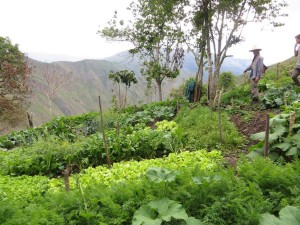 We’re working on an eco-regenerative platform on many fronts in collaboration with our indigenous neighbors who live near the 4,000 acre reserve we were able to save from exploitation of deforestation, gold digging, mining or possibly all of the above. These projects involve investigation and beyond organic and Fair Trade production of vegetables, medicinal plants, and fruit as well as honey and super foods.
We’re working on an eco-regenerative platform on many fronts in collaboration with our indigenous neighbors who live near the 4,000 acre reserve we were able to save from exploitation of deforestation, gold digging, mining or possibly all of the above. These projects involve investigation and beyond organic and Fair Trade production of vegetables, medicinal plants, and fruit as well as honey and super foods.
Cultivating all of the amazing abundance this region has to offer simultaneously nurtures the natural environment while we work together with surrounding communities to create stable national and international beyond Fair Trade markets. In this way, we can can transform the whole region into an inspiring example of the most ecological and regenerative expression for surrounding provinces and regions.
Living continuously and interacting directly with these communities allows us to deeply understand the areas of real need and where best to use the regenerative financial income. From this relationship, we’ve found that one of the key factors in degradation of families and communities is the lack of schools in the region, so we’re taking calculated steps to bridge this gap.
Cultural, social and ecological interaction in this way supports local communities and families to stay together in an empowered way and we’re deeply inspired to dedicate our energy and resources towards re-establishing this local ecosystem. We’ll keep you up-to-date as this develops.
Supporting local families with legal ownership 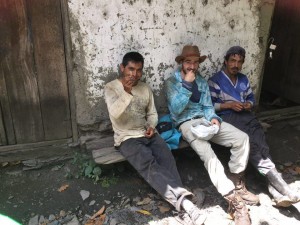
Many local communities in the Mapacho Valley surrounding our reserve do not have legal titles for the lands they have stewarded for many generations due to the expense and complications of the legal processes involved. This leaves communities in a vulnerable position where miners and other extractive industries can actually obtain concessions from local government and take over their ancestral lands for the use of industry.
We’re working to support these communities with access to the legal support and education necessary for them to secure titles for the land their families have lived on for generations before mining and logging corporations move in. Companies are much better versed in the system and have large budgets for legal departments, so up until now, remote local communities did not have much ground to stand on in competition with these forces.
Expanding our Healing Center
Through the success of our Cultural Healing Exchange clinics we have been welcomed with open arms by the local communities and municipalities of the Sacred Valley region to continue to share education on holistic and preventative health. We recently finalized the contract for a plot of land near Taray where we’ll soon start building the expansion of our indigenous healing center and community herbal pharmacy for the local and international community.
Regeneration is not possible through forming a needless dependency on Western pharmaceuticals. Regeneration involves the recognition of the vast wealth of cultural and spiritual capital available in the form of indigenous medicinal practices that have been effectively healing both mental and physical ailments of indigenous populations for countless thousands of years.
Our current collaboration with international natural medicine practitioners and native healers is geared towards reminding the local population about the medicinal plants to be found and grown in their back gardens and encourage good dietary habits. This way, we spread the intellectual capital that shows how both prevention and healing start at home rather than looking externally for help when things go wrong.
Developing Paititi Permaculture
Regeneration requires experiential insight into natural environmental management so current and new generations can support bio-diverse gardens and small or large scale native reforestation initiatives. That’s why we hold many 1-month long permaculture work-study-service retreats each year, with an official Permaculture Design Course (PDC) coming up this October.
Both our previous center in the jungle near Iquitos and our sanctuary in the Andes, are based on the foundation of intercultural exchange and sharing. Many Peruvian locals hold a profound wealth of ancestral wisdom around growing food and living in harmonious relationship with nature, yet often don’t value this wisdom since the modern world looks down on it as “primitive”. Through collaboration with our Permaculture methods as well as our genuine human relationships and appreciation, many are able to recognize the profound values they grew up with. The old paradigm approach encourages a savior mentality seeking external help for progress, often generating resentment from feeling like foreigners are superior and imposing in their own home. Our approach is to honor and embody the cultural heritage through respectful cooperation, mutual coexistence and learning.
This also means they’re less likely to be fooled by the modern systems coming in and telling them they need to adopt damaging practices involving monocrops and chemicals. Instead regeneration happens literally from the ground up, with soil, biodiversity, and communities all benefiting as a result.
People learn about small-scale farming initiatives rather than industrial corporate operations that use so many chemicals that special hazardous material suits must be worn on the farm, and that’s before the food goes for processing in factories. With permaculture techniques, we raise awareness in the population about the farm-to-table connection, encourage and share as well as learn garden growing, farmer’s markets and more conscious management of the land.
How regenerative is your thinking?
Regeneration means holistic thinking that heals at both the individual and societal levels. We need not only regenerative techniques that go further than mere sustainability, but techniques that empower all of us to become part of the solution so all of us can take responsibility in rebuilding our society, economy, health and environment, whichever culture we’re from. Even more so than the techniques is the ability to be a heart-centered human being with the clarity of mind that results from inner to peace to really affect lasting change in the world around.

